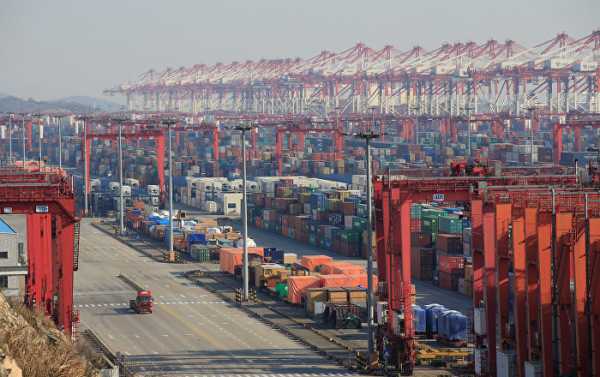
A new report from the Chinese government finds the nation’s foreign trade took a blow last month, although China’s trade performance for the whole of 2018 was still solid.
Kristian Rouz — Global trade tensions and a cooling overseas demand have taken a toll on China’s exports, suggesting the nation is likely poised for slower economic expansion this year. These developments add pressure on Beijing to implement additional fiscal and monetary stimuli and strike a bilateral trade deal with the US.
According to a new report from the Chinese government, the nation’s exports dropped 4.4 percent year-on-year in December, while imports also unexpectedly slumped 7.6 percent. This is the biggest blow to China’s foreign trade since July 2016, when softening global economic growth affected overseas demand for Chinese goods.
Economists say the situation might be repeating itself, as some of the largest importers of Chinese manufactured goods are facing challenges to consumer demand and business activity at home.
“Today’s data reflect an end to export front-loading and the start of payback effects, while the global slowdown could also weigh on China’s exports”, analysts from Japanese financial services company Nomura Holdings wrote in a note.
Meanwhile, the Chinese government also said the nation’s trade surplus with the US hit its highest on record this past year, reaching a stunning $323.32 billion. Chinese exports to the US increased 11.3 percent in 2018, while imports from the US only added 0.7 percent, despite the Trump administration’s efforts to fix the imbalances in bilateral trade.
Experts say this could be a result of American companies stockpiling Chinese goods ahead of each round of tariffs enacted by US President Donald Trump last year. However, a stronger US economy and improved consumer sentiment also played a role, driving up the demand for Chinese goods across North America.
This, however, didn’t help China make up for the loss of exports to other parts of the world last month, even though as whole Chinese exports increased 9.9 percent in 2018, the highest in seven years.
But some experts are hardly optimistic about China’s trade prospects unless Beijing is able to reach an agreement with the US. They suggest the December data could exemplify the upcoming near-term developments in Chinese trade due to various factors.
“A trade recession is likely, in our view”, Raymond Yeung of the Australian and New Zealand Bank (ANZ) said. “The global electronics cycle remains the key driver of Chinese exports. A potential downturn in the sector poses the real risk to China’s external outlook even if China and the US reach a resolution on their trade dispute”.
For its part, the Chinese government could take additional steps to relax monetary policies and support domestic lending by further lowering central bank interest rates and commercial bank reserve requirement ratios.
“If pressure on the economy is still relatively large in the first half, a cut every quarter should be highly likely”, Xu Gao of Everbright Securities said.
Others say Beijing could increase budget spending and investment in domestic consumer-oriented industries in order to stave off the possible negative effects of global headwinds to the national economy.
“The import slowdown is consistent with other signs that growth in China’s domestic economy continued to weaken”, Louis Kuijs of Oxford Economics said. “Overall economic growth slowed further in the fourth quarter and remains under pressure from weaker exports, slow credit growth and cooling real estate activity”.
However, yet another round of devaluation in China’s national currency, the renminbi, could be a more likely scenario, most pessimistic analysts say. China has recently pledged to refrain from what US officials call currency manipulations, but a deteriorating global trade landscape could leave Beijing without other viable options.
For the time being, Chinese officials are expected to lower their GDP growth forecast for this year to 6.0-6.5 percent — compared to a 6.5-percent outlook for 2018 set a year ago.
Beijing is expecting the GDP growth rate to hit 6.6 percent for part of the year, exceeding expectations, but this year could pose greater challenges to the Chinese private sector and import-reliant industries.
Sourse: sputniknews.com






